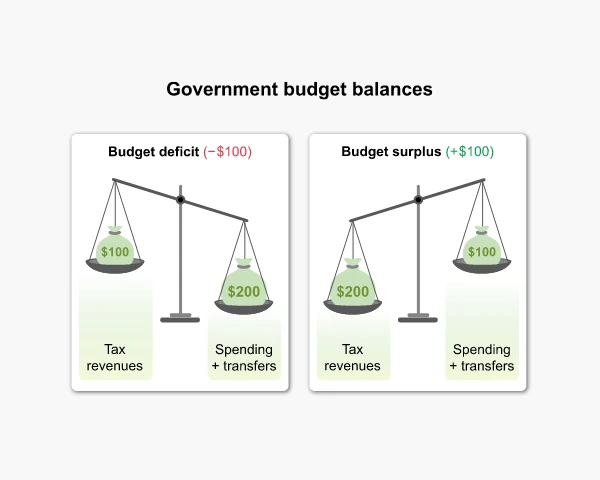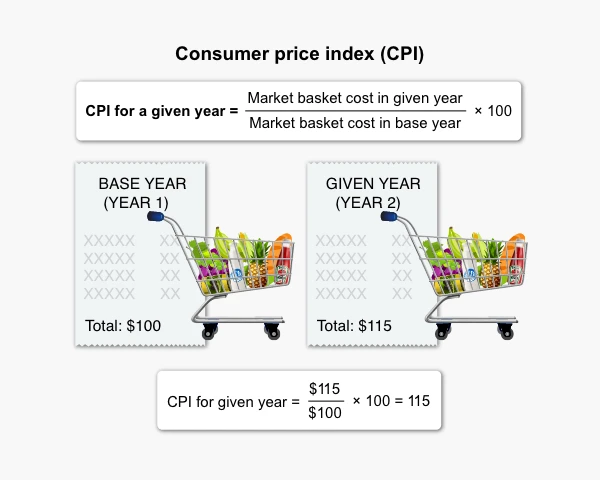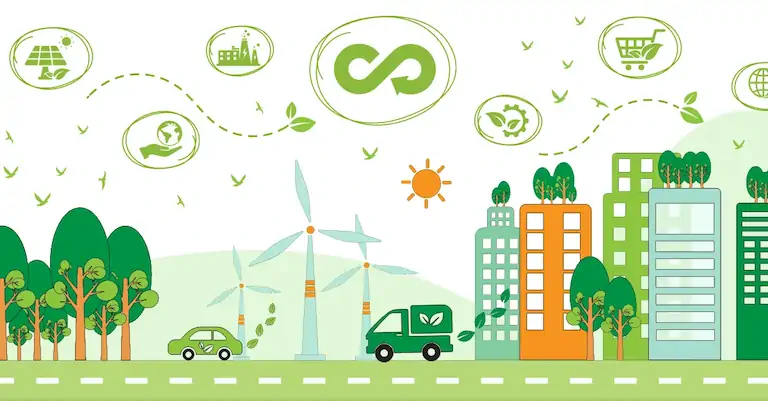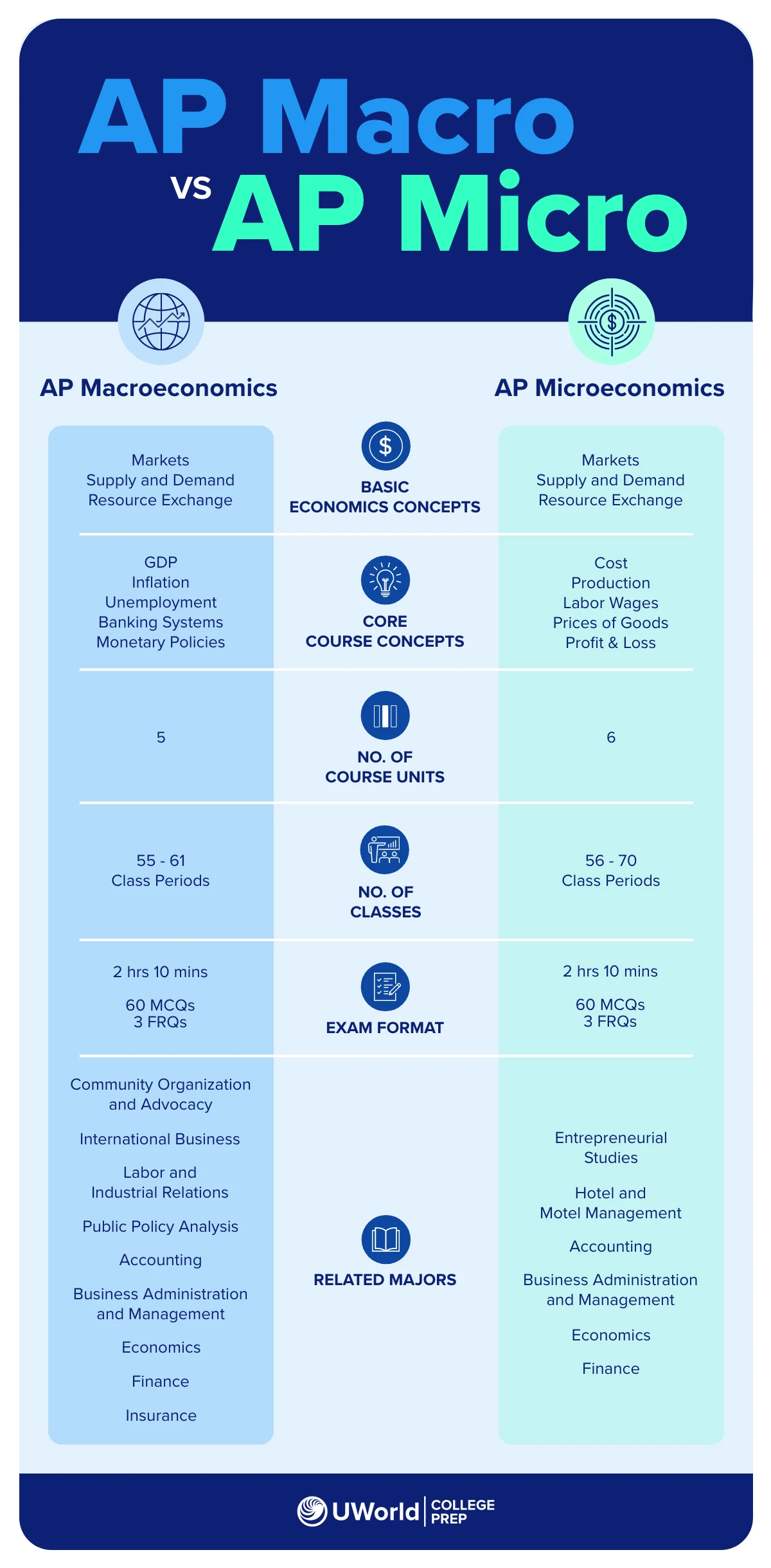Key Differences between Macroeconomics and Microeconomics
Macroeconomics and Microeconomics are the two branches of economics, and each offers different vantage points for studying economic systems. Before we explore the key differences between AP Micro and Macro, you should understand what these two subjects are (minus the ‘AP’ tag) and how each contributes to the larger study of economics.
Scope & Focus
As a basic concept, macroeconomics centers on the economic systems of large entities like countries, regions, and governments. Conversely, microeconomics studies the economic systems on a smaller scale, including individuals, companies, and small financial institutions.
The integration of macroeconomics and microeconomics offers a comprehensive understanding of how the holistic economic system functions as a cohesive unit. Neither area holds more significance than the other; rather, they offer students and researchers two complementary perspectives within a broader economic framework.
-
Methodology
Macroeconomics
The most common metrics and topics in macroeconomics are economic growth, unemployment, inflation, fiscal policy, and monetary policy. Calculate these metrics using aggregate demand and supply analysis, fiscal policy, monetary policy, and macroeconomic models
-
Microeconomics
Because microeconomics deals with specific economic units and how they interact in markets, the most common metrics used here are supply and demand, consumer behavior, production costs, and market structures. To evaluate and analyze these metrics, macroeconomists use marginal analysis, consumer theory, production theory, and market structures (perfect competition, monopoly, oligopoly).
Having grasped these two subject areas, let's explore what AP Macro and Micro offer you and how they can benefit your chosen career path.

AP Microeconomics vs AP Macroeconomics
For students interested in pursuing a career in economics, finance, or business administration, the College Board® offers both AP Macroeconomics and AP Microeconomics as separate courses and exams. Both subjects start by introducing fundamental concepts essential for the study of economics. However, as you progress through the course, you'll discover they diverge in course content and focus. Let’s understand AP Microeconomics vs. AP Macroeconomics in terms of their exam structure, course content, difficulty level, and more.
-
Course Content
While both courses share foundational economic principles, their emphasis on the aggregate economy (Macro) or individual components (Micro) distinguishes them in content and analytical focus. We've listed the course units and topics for AP Macroeconomics and AP Microeconomics, so you'll know what to expect from each course.
AP Macroeconomics Course Units
-
Unit 1: Basic Economic Concepts
Resource scarcity, the need for trading, supply and demand, and market equilibrium.
-
Unit 2: Economic Indicators and the Business Cycle
Flow of money in the market, GDP, unemployment, inflation, and business cycles.
-
Unit 3: National Income and Price Determination
How production choices, economic fluctuations, and government policies affect a country's economic aspects like income and inflation.
-
Unit 4: Financial Sector
Currency, banks, and their role in implementing a country's monetary policies.
-
Unit 5: Long-Run Consequences of Stabilization Policies
Long-term consequences of policy measures and understanding a country’s economic growth.
AP Microeconomics Course Units
-
Unit 1: Basic Economic Concepts
Resource scarcity and allocation, the need for trading, profit, loss, and how consumer choice dictates the cost of a product or service.
-
Unit 2: Supply and Demand
Production, supply and demand of resources, market equilibrium, effects of government policy on market, and product costs.
-
Unit 3: Production, Cost, and the Perfect Competition Model
Production costs, types of profit, marginal analysis, and perfect competition.
-
Unit 4: Imperfect Competition
Monopoly and oligopoly, and how price discrimination increases product costs.
-
Unit 5: Factor Markets
Introduction to factor markets, factor demand, factor supply, and monopolistic markets.
-
Unit 6: Market Failure and the Role of Government
Public policies and government intervention in markets, their function, public and private goods, and inequality.
-
To learn more about what the AP Macro offers, check out our easy-to-follow AP Macroeconomics Course and Exam Description.

Examples
Do you wonder how AP Micro and AP Micro come to help in the real world? Below are a couple of scenarios where macro and microeconomics are commonly applied:
Microeconomics Scenario 1: Individual Consumer Choice and Budgeting
Kate, a college student, has a limited budget and needs to decide how much of her income to allocate to different goods and services. She has to make choices between spending on textbooks, leisure activities, and groceries. Therefore, Kate considers factors like the marginal utility of each item, price levels, and her personal preferences to make the most of her limited resources.
Microeconomic Analysis: Using microeconomic concepts like utility maximization, budget constraints, and the substitution effect, we can analyze Kate's behavior as a consumer and understand how she allocates resources based on preferences and budget limitations.
-
Microeconomics Scenario 2: Policy Decision
A government agency is tasked with reducing carbon emissions to combat climate change. The agency must design policies encouraging organizations and firms to adopt cleaner technologies and reduce their carbon footprint.
Microeconomic Analysis: Using Microeconomics, we can assess the efficacy of environmental policies and study how firms respond to incentives and regulations by considering factors like production costs, technological innovation, and market structures. Microeconomic tools help policymakers design policies that balance environmental goals with business efficiency.
-
Macroeconomics Scenario 1: Government Fiscal Policy
A country faces an economic recession with high unemployment rates. The government decides to implement a stimulus package to boost economic activity and employment. They may increase government spending on infrastructure projects and cut taxes to stimulate consumer spending.
Macroeconomic Analysis: This scenario requires macroeconomics to analyze how government spending and taxation changes can impact the economy on a broader scale. By using concepts like fiscal policy, aggregate demand, and the multiplier effect, policymakers can develop and manage the overall health of the country's economy.
-
Macroeconomics Scenario 2: International Trade and Exchange Rates
A country is experiencing a trade deficit, where it imports more goods than it exports. The government aims to address this imbalance and boost domestic industries.
Macroeconomic Analysis: In this scenario, macroeconomics helps analyze the impact of international trade on a country's overall economic health. Concepts such as balance of payments, exchange rates, and trade policies are essential in understanding how a nation's macroeconomic goals can be influenced by its interactions with the global economy. In this case, implementing trade tariffs or subsidies may encourage domestic production and reduce imports.
Test Format
There are no differences in the test format between these two exams. The table below summarizes the test formats for AP Macro and AP Micro:
AP Microeconomics AP Macroeconomics Time Section I (MCQ) 1 hr 10 mins 1 hr 10 mins Section II (FRQ) 1 hr 1 hr Total 2 hrs 10 mins 2 hrs 10 mins No. of Questions Section I (MCQ) 60 60 Section II (FRQ) 3 3 Total 63 63 Note: A four-function calculator is permitted for use in both sections of the AP Macroeconomics and the AP Microeconomics exams.
Difficulty Levels
Students often ask, "Is AP Macro or micro easier?" To answer this question, let's address three major aspects that can help you gauge the difficulty levels of AP Macro and Micro:
-
Course Content and Exam Format
As discussed above, both AP Macro and AP Micro courses start with the basic principles of economics and then branch out to their specific subject areas. This means that while the courses vary in subject matter, they are both introductory, so their difficulty levels are similar.
In terms of exam format, the test duration and the number of questions are identical, meaning you do not need extra skills or learning approaches to master one or the other. So, assessing their difficulty levels based on the course content and the exam format is not ideal.
Score Distribution
A look at the score distribution pattern of these exams can shed light on their difficulty levels. Usually, the rule of thumb is that an AP exam with a high success rate (3 or above) is considered relatively easier than the others. But exceptions do exist; therefore, we will now analyze what the score distributions for AP Macro and AP Micro indicate:
AP Microeconomics AP Score % of Students 2024 % of Students 2023 % of Students 2022 5 22.9% 21.3% 17.7% 4 23.9% 26.0% 22.5% 3 20.8% 20.6% 18.8% 2 19.2% 19.9% 16.9% 1 13.2% 12.1% 24.2% 3 & Above 67.6% 68.0% 59.0% At first glance, it seems like more students aced the AP Micro exam than the AP Macro. However, AP Macro is more popular, with 160,741 students taking it in 2024, surpassing the 103,809 students who opted for the AP Micro exam in the same year.
Ultimately, choosing one or the other boils down to your learning aptitude, areas of interest, and career goals. You can always audit both courses and take a practice test for each to evaluate your preference. In addition, it is always a good idea to consult your AP teacher and high school seniors to make an informed decision.
-
Relevance and interdependence
AP Macroeconomics and AP Microeconomics share foundational concepts within the broader field of economics. Therefore, they offer credit and/or placement for college majors, including accounting, business administration, economics, finance, and more.
In addition, each of these AP courses provides unique advantages for niche majors. A good AP Macroeconomics score can benefit majors such as community organization, international business, labor relations, and public policy analysis while excelling in AP Microeconomics, which aligns with careers in general business, entrepreneurship, and hotel management.
Should I Take Micro or Macroeconomics First?
AP Macro and AP Micro kick off by diving into fundamental economic principles that lay the groundwork for studying economics. As with introductory courses, you can choose either based on your career interests and learning style. Whichever course you take, create a dedicated study plan and take regular practice tests to improve your subject knowledge and test-taking skills.
UWorld provides a complete AP Macroeconomics prep course, which comes with a comprehensive study guide and an extensive QBank to help you get your desired score on the exam.
Can you take both AP Macroeconomics and AP Microeconomics?
Absolutely! You can take both AP Macroeconomics and AP Microeconomics. Many students choose to study both courses as they cover different aspects of economics and provide a more comprehensive understanding of economic principles and their applications.
Key Takeaways: AP Micro vs. AP Macro
- AP Macroeconomics and AP Microeconomics cover two aspects of economics. So, consider your career interests before choosing between them.
- Both exams have similar difficulty levels in terms of course content, skills, and exam format, so you can take either as your first AP economics course.
- If you're planning a major in economics, finance, or business, consider taking AP Micro and Macro to boost your chances of getting placement and college credit.

References
- AP Microeconomics Exam – AP Central | College Board. (n.d.). apcentral.collegeboard.org. Retrieved December 11, 2024 https://apcentral.collegeboard.org/courses/ap-microeconomics/exam
- AP Macroeconomics Exam – AP Students | College Board. (n.d.). apstudents.collegeboard.org. Retrieved December 11, 2024 https://apstudents.collegeboard.org/courses/ap-macroeconomics/assessment
- Connect AP to Majors and Careers – AP Students | College Board. (n.d.). apstudents.collegeboard.org. Retrieved December 11, 2024 https://apstudents.collegeboard.org/choosing-courses/by-major-career
- AP Microeconomics Course and Exam Description, Effective Fall 2022. (2022). apcentral.collegeboard.org. Retrieved December 11, 2024, from https://apcentral.collegeboard.org/media/pdf/ap-microeconomics-course-and-exam-description.pdf
- AP Macroeconomics Course and Exam Description, Effective Fall 2022. (2022). apcentral.collegeboard.org. Retrieved December 11, 2024, from https://apcentral.collegeboard.org/media/pdf/ap-macroeconomics-course-and-exam-description.pdf
- Sample Syllabus #1 AP® Microeconomics. (2020). apcentral.collegeboard.org. Retrieved December 11, 2024, from https://apcentral.collegeboard.org/media/pdf/ap-microeconomics-sample-syllabus-1.pdf
- AP® Macroeconomics. (2020). apcentral.collegeboard.org. Retrieved December 11, 2024, from https://apcentral.collegeboard.org/media/pdf/ap-macroeconomics-sample-syllabus-1.pdf
- Student Score Distributions AP Exams - May 2024. (2023). apcentral.collegeboard.org. Retrieved December 11, 2024, from https://apcentral.collegeboard.org/media/pdf/ap-score-distributions-by-subject-2023.pdf
- Student Score Distributions* AP Exams - May 2022. (2022). apcentral.collegeboard.org. Retrieved December 11, 2024, from https://apcentral.collegeboard.org/media/pdf/ap-score-distributions-by-subject-2022.pdf
- 2024 AP Score Distributions. (2024). apstudents.collegeboard.org. Retrieved December 11, 2024, from https://apstudents.collegeboard.org/about-ap-scores/score-distributions
Related Articles
Gain a deeper understanding of the AP Macro exam, including its key details and nuances. Unlock valuable insights about why to take the AP Macro exam and how to score high.
AP Macroeconomics Exam FormatDiscover the structure of the AP Macroeconomics exam, including its format, question types, and key components. Gain valuable insights to enhance your prep and confidence.
How to Study for AP Macroeconomics ExamExplore effective study plans and strategies for the AP Macroeconomics exam. Master essential tips for success and take your understanding of AP Macro to the next level.
AP Macroeconomics CEDGoing through the College Board's 200-page CED can be time-intensive. Here is an easy-to-understand AP Macroeconomics course and exam description to ease your exam prep.



